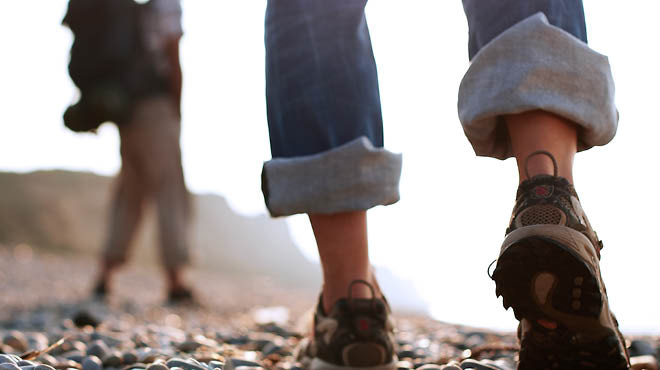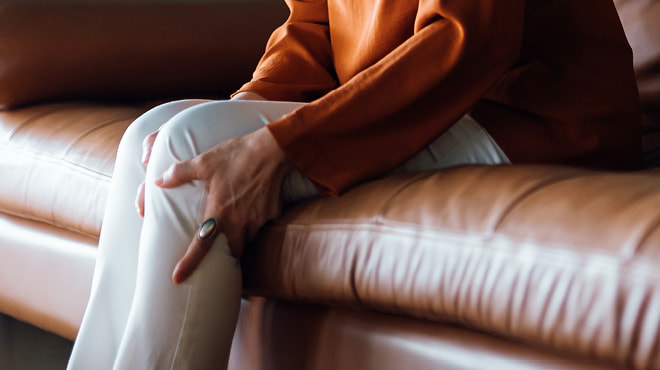Recent Posts
Vein pain no walk in the park

Cindy Stone loved to be active — whether it was going for a walk, working in her garden or spending time with her grandchildren. But a dull ache in her right leg due to varicose vein pain was starting to cramp her style.
“It wasn’t anything terribly bothersome, but you knew it was there — especially if I was doing some gardening or doing a lot of walking outside,” says Cindy, a 70-year-old Chetek, Wisconsin, resident. “I’d kind of sit and rub it, and I’d feel a little bit better, but it was getting progressively worse the older I got.”
Going for a daily walk went from something she welcomed to something she shied away from, knowing she’d pay the price by way of a throbbing leg later that night.
Then varicose veins began to bulge on her leg, “and they look so ugly — like a pencil sticking out of there,” says Cindy, remembering how she didn’t want to wear shorts or skirts because of her self-consciousness.
SEEKING RELIEF FROM VEIN PAIN
After five to seven years passed, Cindy decided enough was enough and brought up the issue at her next annual exam with Rebecca Sarauer, a physician assistant at Mayo Clinic Health System – Northland in Chetek, who advised her that some varicose vein sufferers can get by with wearing compression socks. While doing so doesn’t cure the problem, it can help ease the pain. She also recommended that Cindy schedule an evaluation with Tim Berkseth, M.D., a general surgeon at Mayo Clinic Health System – Northland in Barron who has expertise in minimally invasive varicose vein treatments.
Cindy had her reservations but heeded the advice.
“For most people, especially as you get a little older, you’re not real anxious to go see a surgeon,” she says. “You just kind of put it off, and you think: ‘Oh, I don’t know if I want to go through all of that.’ But I have to tell you, this doctor had such a bedside manner — it was just phenomenal. He explained everything about what was going to go on to become a candidate for surgery, and I just had absolutely no questions left unanswered about the whole process.”
Dr. Berkseth explained to Cindy that she had chronic vein disease and was experiencing the achy, heavy feeling in her leg because blood wasn’t adequately flowing up the vein.
“The veins in our legs have one-way valves in them that are supposed to prevent blood from going back down the leg,” Dr. Berkseth says. “Over time, the little valves can get leaky from chronic vein disease. With that, instead of flowing up the leg, your blood starts to flow back through these leaky valves. You get extra blood volume in those veins and you see the bulges — the varicose veins — and then have pain, achiness, heaviness and swelling.”
“We have a lot of good minimally invasive options now for the treatment of chronic vein disease." — Tim Berkseth, M.D.
In April, Dr. Berkseth performed two minimally invasive, outpatient procedures on Cindy’s right leg. The first procedure is known as endovenous radiofrequency ablation. Dr. Berkseth threaded a long catheter through the diseased greater saphenous vein, one of the superficial veins in Cindy’s leg. Once in position, he delivered radiofrequency energy to the end of the catheter one segment at a time until the length of the impacted vein was treated — essentially heating the inside of the vein to 248 degrees F — to cause thermal injury to the vein’s inside lining.
“Although we’re not physically removing the vein like we used to do with vein stripping, the minimally invasive procedure renders the vein completely useless because it scars down such that blood can no longer flow through it,” Dr. Berkseth says. “Basically, you don’t have blood flowing through the bad veins, and it then gets redirected into the deep veins that are functioning well.”
The second procedure — stab avulsion phlebectomy — involved treating other visible varicose veins that were likely side branches off Cindy’s diseased vein. “We make a tiny incision over each varicose vein and physically remove short segments of these veins that look abnormal,” Dr. Berkseth says. Just like the first procedure, blood is rerouted to healthy veins so circulation is not impacted.
LOVING THE RESULTS
Cindy marvels at how much better she’s feeling today and wonders why she waited so long to be evaluated.
“I’m so glad I did this, and, really, I would encourage anyone, even if you’ve just started with some of this dull aching, not to wait. It’s just so nice to have that gone and taken care of,” she says.
Dr. Berkseth says that’s a common response to this common condition.
“We have a lot of good options now for the treatment of chronic vein disease with these minimally invasive procedures,” he says. “Most patients do well and are happy with the results. The complication rate of surgery is low, so it has a good risk-benefit reward.”
Cindy says she can’t praise Dr. Berkseth enough for a job well done.
“He and his staff are just phenomenal,” she says. “For them, I’m sure it’s routine. Surgery and taking care of these things for people is their job. But, in their hands, I just felt like a part of the whole thing and felt so comfortable. And it sure is nice to have that done.”






